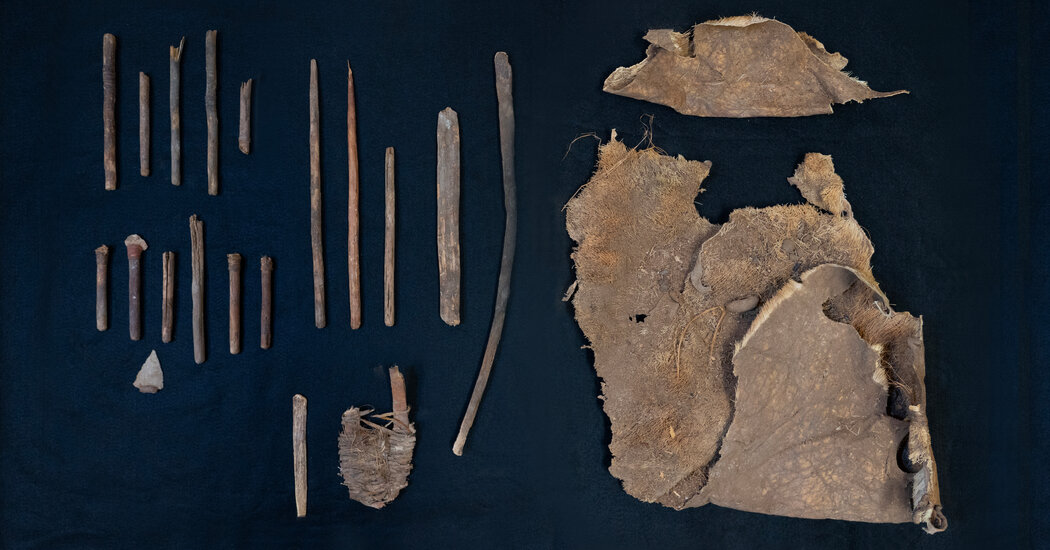The ancient weapons, found in a cave near Marfa, could be among the oldest near-complete set of wood and stone hunting tools found in North America.
The 6,500-year-old hunting kit contained pieces of a spear thrower and a boomerang, as well as wood- and stone-tipped darts. It was found in a cave in West Texas near the remains of a small fire, and a pile of well-preserved human waste — evidence of those who had once sheltered inside.
The weapons, discovered over the past several years near Marfa, a small desert town about 40 miles northwest of the border with Mexico, could be among the oldest near-complete sets of wood and stone hunting tools found in North America, according to archaeologists at Sul Ross State University and the University of Kansas.
The researchers have yet to publish their full findings, but they said that dating suggested that one of the weapons was about 7,000 years old. The artifacts, researchers say, could help shed light on the complex ways in which ancient humans hunted for their prey and fixed their broken belongings.
“We were just stunned, because I’ve never even seen that stuff,” said Bryon Schroeder, the director of the Center for Big Bend Studies at Sul Ross State University and one of the lead researchers on the project.
The kit, which includes various pieces of weapons, as well as a folded antelope hide that was most likely used to sew a bag or clothing, was discovered over the past several years at the San Esteban Rockshelter — a partially collapsed cave between Marfa and Alpine, Texas. Dr. Schroeder and his team first began digging at the site in 2019, funded by a University of Kansas grant with a mission to search for the oldest evidence of humans in North America.
Looters have ransacked the site for years, Dr. Schroeder said, making it challenging to find an untouched area to dig in. The researchers crawled between rocks, eventually locating a spot where they believed they might still find some salvageable artifacts. “We quickly found out that it’s really, really, really deep in that part of the site,” Dr. Schroeder said. “The reason we were out there is to find really old stuff,” he added. “So we kept going deeper.”
